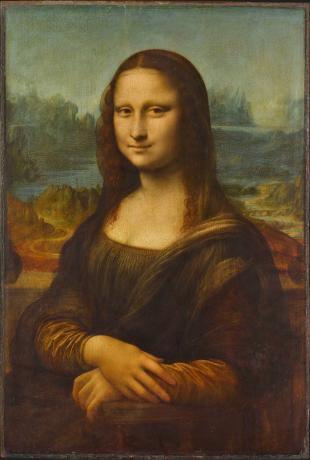O Rebirth it was a cultural, economic and political movement that emerged in Italy in the 14th century and extended until the 17th century throughout Europe.
Inspired by the values of Classical Antiquity and generated by economic changes, the Renaissance reshaped medieval life, and began the Modern Age.
Origin of the Renaissance
The term Renaissance was created in the century. XVI to describe the artistic movement that emerged a century earlier. It later came to designate the economic and political changes of the period as well, and it is very contested today.
After all, cities have never completely disappeared and peoples have not stopped trading among themselves or using currency. There was, indeed, a decrease in these activities during the Middle Ages.
We note, however, that in the Italian Peninsula several cities such as Venice, Genoa, Florence, Rome, among others, benefited from trade with the Orient.
These regions were enriched by the development of trade in the Mediterranean Sea, giving rise to a rich mercantile bourgeoisie. In order to assert themselves socially, these merchants sponsored artists and writers, who inaugurated a new way of making art.
The Church and nobility were also patrons of artists such as Michelangelo, Domenico Ghirlandaio, Pietro della Francesa, among many others.
Renaissance culture
We highlight five outstanding features of Renaissance culture:
- Rationalism - reason was the only way to reach knowledge, and that everything could be explained by reason and science.
- Scientism - for them, all knowledge should be demonstrated through scientific experience.
- Individualism - human beings sought to affirm their own personality, show their talents, achieve the fame and satisfy their ambitions, through the conception that the individual right was above the right collective.
- Anthropocentrism - placing man as God's supreme creation and the center of the universe.
- Classicism – artists seek their inspiration from the Greco-Roman Classical Antiquity to make their works.
Renaissance Humanism
Humanism was a movement to glorify man and human nature, which emerged in the cities of Italian peninsula in the middle of the 14th century.
Man, the most perfect work of the Creator, was able to understand, modify and even dominate nature. Therefore, humanists sought to interpret Christianity, using writings from ancient authors such as Plato.
Religion did not lose importance, but it was questioned and from there emerged new Christian currents such as Protestantism.
The study of ancient texts, likewise, aroused a taste for historical research and knowledge of classical languages such as Latin and Greek.
In this way, humanism became a reference for many thinkers in the following centuries, such as the Enlightenment philosophers of the 17th century.
literary renaissance
The Renaissance gave rise to great literary geniuses, including:
- Dante Alighieri: Italian writer author of the great poem "Divine Comedy".
- Machiavelli: author of "The prince", a pioneering work of political science where the author gives advice to the governors of the time.
- Shakespeare: considered one of the greatest playwrights of all time. In his work, he addressed human conflicts in the most diverse dimensions: personal, social, political. He wrote comedies and tragedies such as "Romeo and Juliet", "Macbeth", "the tame shrew", "Othello" and many others.
- Miguel de Cervantes: spanish author of the work "Don Quixote", a scathing criticism of medieval chivalry.
- Luís de Camões: featured in Renaissance literature in Portugal, being the author of the great epic poem "The Lusiads".
artistic renaissance
The main artists of the renaissance were:
Leonardo da Vinci: Mathematician, physicist, anatomist, inventor, architect, sculptor and painter, he was the stereotype of the Renaissance man who dominates various sciences. Therefore, he is considered an absolute genius. THE Mona Lisa and The last supper are his masterpieces.

Rafael Sanzio: was a master of painting and famous for knowing how to convey delicate feelings through his images of Our Lady. One of his most perfect works is the Madonna of the Prado.
Michelangelo: Italian artist whose work was marked by humanism. In addition to being a painter, he was one of the greatest sculptors of the Renaissance. Among his works, the pieta, David, Adam's Creation and The final judgement. He was also responsible for painting the Sistine Chapel ceiling.
Learn more about Renaissance Artists
scientific renaissance
The Renaissance was marked by important scientific discoveries, notably in the fields of astronomy, physics, medicine, mathematics and geography.
the polish Nicolas Copernicus, who denied the geocentric theory defended by the Church, stating that "the Earth is not the center of the universe, but simply a planet that revolves around the Sun.l".
Galileo Galilei discovered Saturn's rings, sunspots, Jupiter's satellites. Persecuted and threatened by the Church, Galileo was forced to publicly deny his ideas and discoveries.
In medicine, knowledge has advanced with works and experiences on blood circulation, cauterization methods and general principles of anatomy.
commercial renaissance
All these innovations were only possible thanks to the commercial growth that took place in the Middle Ages.
When the harvests were good and food was left over, it was sold in traveling fairs. With the commercial increase, sellers started to settle in certain places that became known as burgo. Thus, whoever lived in the borough was called a bourgeois.
At fairs it was easier to use currencies than the exchange system. However, as each fief had its own coin it was difficult to know what the correct value would be. Thus, people specialized in currency exchange (exchange) emerged, others in making loans and guaranteeing payments, and that is the origin of banks.
Money, then, became more valued than land and this inaugurated a new way of thinking and relating in society where everything would be measured by the amount of money it cost.
Expand your knowledge by reading the articles:
- Renaissance Phases
- Renaissance Characteristics
- cultural renaissance
- urban renaissance
- commercial renaissance
- Renaissance Humanism
- Anthropocentrism

